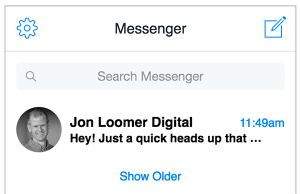It’s one of the most common ways for businesses to communicate with their customers and prospects, and GDPR won’t change that. But the popularity of email marketing doesn’t mean brands – large or small – get it right every time, if at all. Here, Adam Oldfield, managing director of marketing automation platform Force24, advises how to make email marketing work for your organisation…
First thing’s first, it goes without saying that it is crucial for businesses to understand the current permissions and compliance landscape that we find ourselves in. But GDPR is such a vast topic on its own, that, for the purpose of this feature, the assumption has been made that the regulatory framework is understood and embraced by readers. Then it is possible to explore how to really ramp up email marketing efforts, with minimal fuss, for maximum gain.
- Realise it’s all about the data
Collect ‘opted-in’ data via as many relevant channels as you can, whether that’s your website, data capture forms (in return for access to value-adding resources), events and social media – the list goes on.
That data then needs to be safeguarded, audited and continually managed, so that any onward communication is compliant and relevant.
Engagement must be monitored too. A person’s likely degree of ‘engagedness’ will vary from business to business, largely dependent on the sector. A restaurant that has had no opens, for 12 months, from a one-time diner, should probably class that recipient as disinterested, for example, whereas a niche component manufacturer within the B2B space would typically only expect opens at random intervals due to the irregularity of an individual’s purchasing needs.
- Define your ‘funnel’
Every business should want to take an individual on a journey with their email marketing. There must be a purpose to the communications being sent, otherwise what’s the point – it’s probably just spam.
Key to this journey is the creation of a clear funnel that you want the customer – or prospective customer – to progress through. It is important to define what you would like them to do at each stage, why, and what should happen next. Again, this comes back to purpose.
Only when these touchpoints are defined, is it possible to craft a process that will nurture people through the funnel and closer to a sale. But it is important to remember industry analysis which shows it takes six pieces of communication before an individual really connects. Marketing automation removes the headache – and time burden – from this exercise.
- Segment your data
More and more organisations are acknowledging the importance of segmentation, but data lists should not just be segmented by singular factors such as sector or another sole demographic. True segmentation should also reflect an individual’s relationship with a brand – and position in the funnel – in real-time. This will govern the tone and content of the communications that ought to be sent to them.
For example, a primary goal may be to encourage someone to download a brochure. When this has been achieved, this may signal a certain degree of interest in a product or service. But the second step should then be to inspire them to further engage with your brand – the download alone won’t mean they’ll buy from you. So, only when they start to advance along the funnel, is it relevant to consider next-step communications that become gradually more sales-specific.
- Content is king
Hopefully this is stating the obvious. But still too many people neglect the importance of interesting, personalised content that will really resonate with the recipient.
Linked to the previous point, organisations should therefore think about the basic principles of a human conversation. You wouldn’t start selling to someone if they didn’t yet know anything about you. The same applies to emails.
So, you need to capture attention, then slowly introduce your business, show understanding, educate, build credibility, raise awareness and gradually create a compelling reason for the relationship to advance. A sales pitch in the first email isn’t just lazy marketing – it’s useless marketing too. It’s almost a given that the comms will be deleted.
Only if these principles are applied, will an email seem truly personalised. Long gone are the days when ‘Hi [name]’ will suffice.
- Be prepared to monitor and measure
Emails can help to create a wealth of data that will aid next step communications and decision making. But it is crucial to focus on the metrics that matter!
Open and click rates are what people usually home in on but, in truth, these are just vanity stats. They don’t truly evidence the effectiveness of the email activity and, more importantly, the activity’s contribution to a company’s bottom line.
Analysing metrics such as lead score, web activity and segment growth represents a far more meaningful use of time. These metrics provide a far more accurate view of audience engagement and indicate the likely return on investment from the email marketing activity.
- Don’t overinvest in any one email
If it takes longer than half an hour to design, build and test an email, in our opinion, you’re doing it wrong!
The reason for this is two-fold:
- An email should simply be a manifestation of a communications strategy that is already in place. In other words, the hard work and detailed thinking should already have been done.
- Companies need to start rationalising their messaging. If it’s possible to say something in four words, not ten, then it should be said in four. The easiest way to sense-check this is to ask: ‘Would I even read this if it was sent to me?’
People overinvest in email and expect the tool alone to contribute to their bottom line. This is only possible if it’s a part of bigger picture thinking.
Originally published here.
Digital & Social Articles on Business 2 Community(19)







